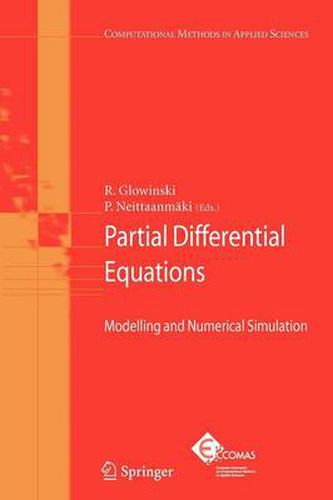Readings Newsletter
Become a Readings Member to make your shopping experience even easier.
Sign in or sign up for free!
You’re not far away from qualifying for FREE standard shipping within Australia
You’ve qualified for FREE standard shipping within Australia
The cart is loading…






This title is printed to order. This book may have been self-published. If so, we cannot guarantee the quality of the content. In the main most books will have gone through the editing process however some may not. We therefore suggest that you be aware of this before ordering this book. If in doubt check either the author or publisher’s details as we are unable to accept any returns unless they are faulty. Please contact us if you have any questions.
For more than 250 years partial di?erential equations have been clearly the most important tool available to mankind in order to understand a large variety of phenomena, natural at ?rst and then those originating from - man activity and technological development. Mechanics, physics and their engineering applications were the ?rst to bene?t from the impact of partial di?erential equations on modeling and design, but a little less than a century ago the Schr odinger equation was the key opening the door to the application of partial di?erential equations to quantum chemistry, for small atomic and molecular systems at ?rst, but then for systems of fast growing complexity. The place of partial di?erential equations in mathematics is a very particular one: initially, the partial di?erential equations modeling natural phenomena were derived by combining calculus with physical reasoning in order to - press conservation laws and principles in partial di?erential equation form, leading to the wave equation, the heat equation, the equations of elasticity, the Euler and Navier-Stokes equations for ?uids, the Maxwell equations of electro-magnetics, etc. It is in order to solve ‘constructively’ the heat equation that Fourier developed the series bearing his name in the early 19th century; Fourier series (and later integrals) have played (and still play) a fundamental roleinbothpureandappliedmathematics,includingmanyareasquiteremote from partial di?erential equations. On the other hand, several areas of mathematics such as di?erential ge- etry have bene?ted from their interactions with partial di?erential equations.
$9.00 standard shipping within Australia
FREE standard shipping within Australia for orders over $100.00
Express & International shipping calculated at checkout
This title is printed to order. This book may have been self-published. If so, we cannot guarantee the quality of the content. In the main most books will have gone through the editing process however some may not. We therefore suggest that you be aware of this before ordering this book. If in doubt check either the author or publisher’s details as we are unable to accept any returns unless they are faulty. Please contact us if you have any questions.
For more than 250 years partial di?erential equations have been clearly the most important tool available to mankind in order to understand a large variety of phenomena, natural at ?rst and then those originating from - man activity and technological development. Mechanics, physics and their engineering applications were the ?rst to bene?t from the impact of partial di?erential equations on modeling and design, but a little less than a century ago the Schr odinger equation was the key opening the door to the application of partial di?erential equations to quantum chemistry, for small atomic and molecular systems at ?rst, but then for systems of fast growing complexity. The place of partial di?erential equations in mathematics is a very particular one: initially, the partial di?erential equations modeling natural phenomena were derived by combining calculus with physical reasoning in order to - press conservation laws and principles in partial di?erential equation form, leading to the wave equation, the heat equation, the equations of elasticity, the Euler and Navier-Stokes equations for ?uids, the Maxwell equations of electro-magnetics, etc. It is in order to solve ‘constructively’ the heat equation that Fourier developed the series bearing his name in the early 19th century; Fourier series (and later integrals) have played (and still play) a fundamental roleinbothpureandappliedmathematics,includingmanyareasquiteremote from partial di?erential equations. On the other hand, several areas of mathematics such as di?erential ge- etry have bene?ted from their interactions with partial di?erential equations.